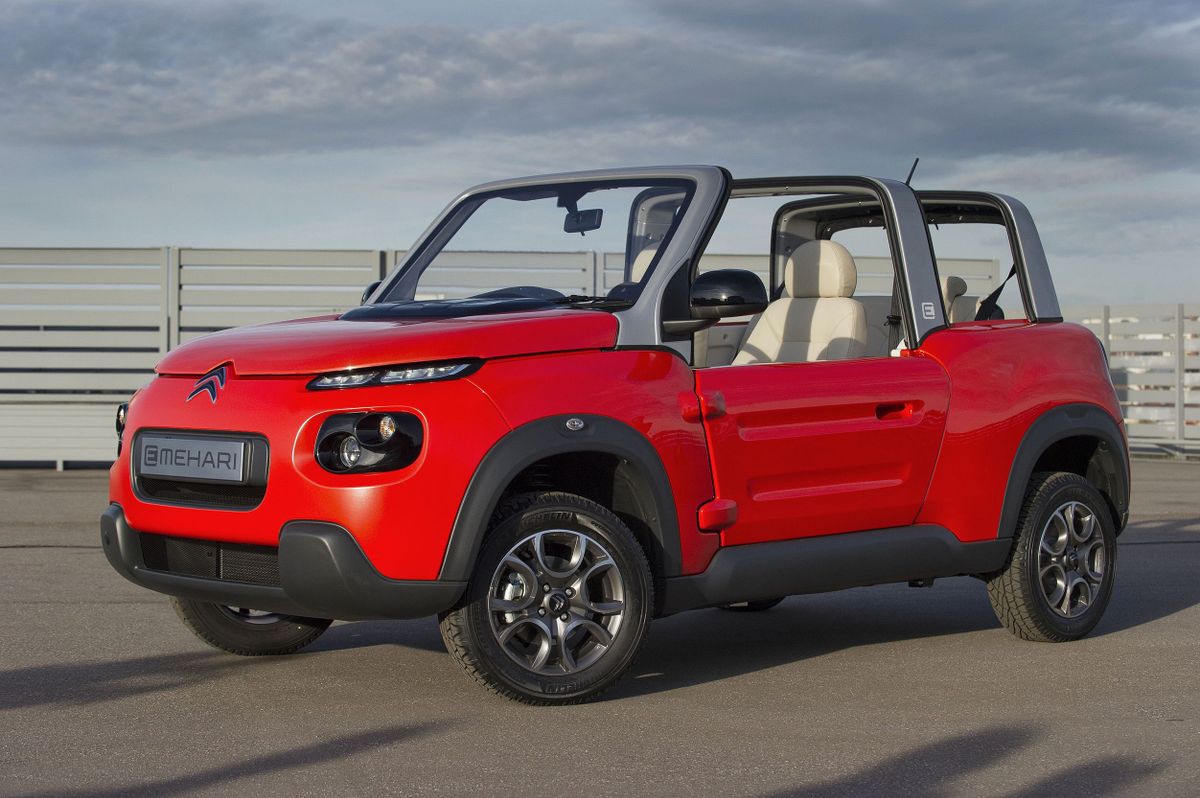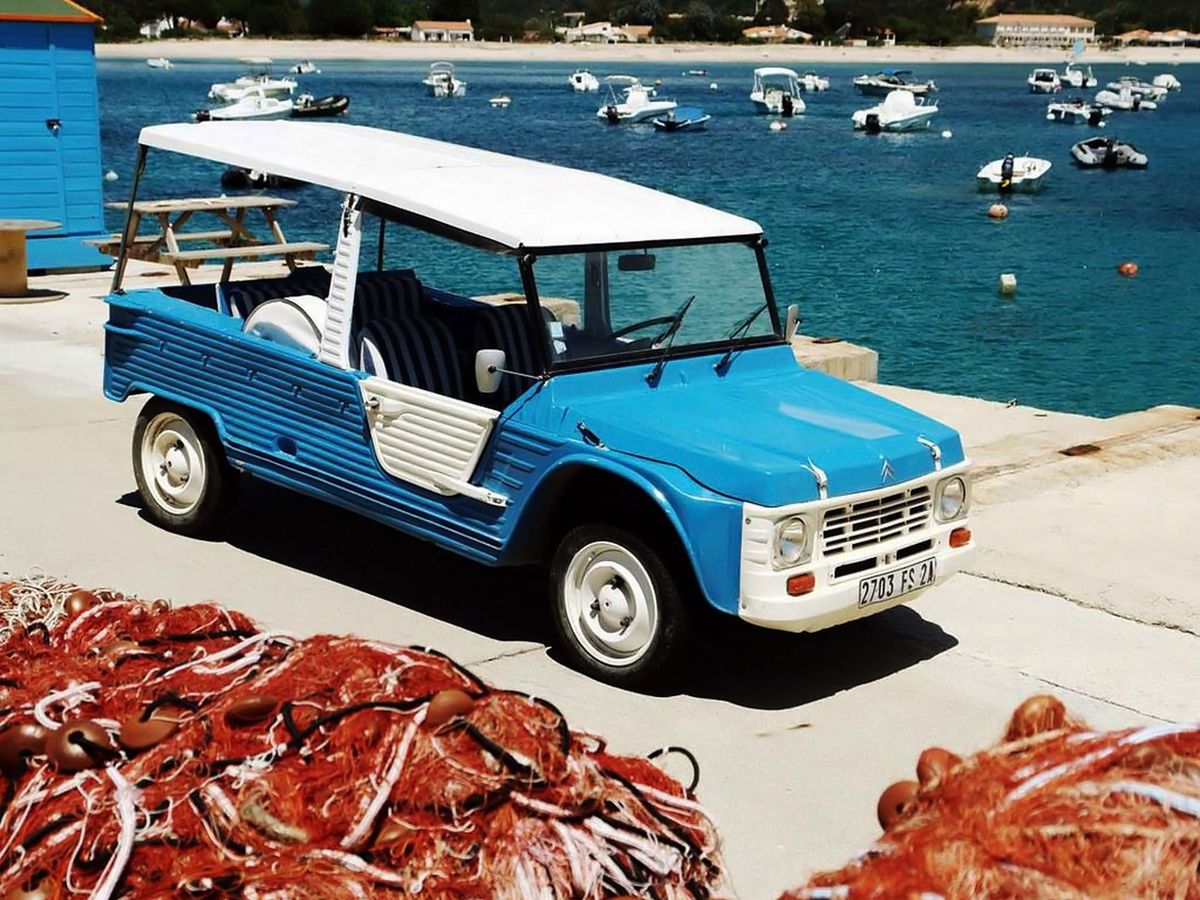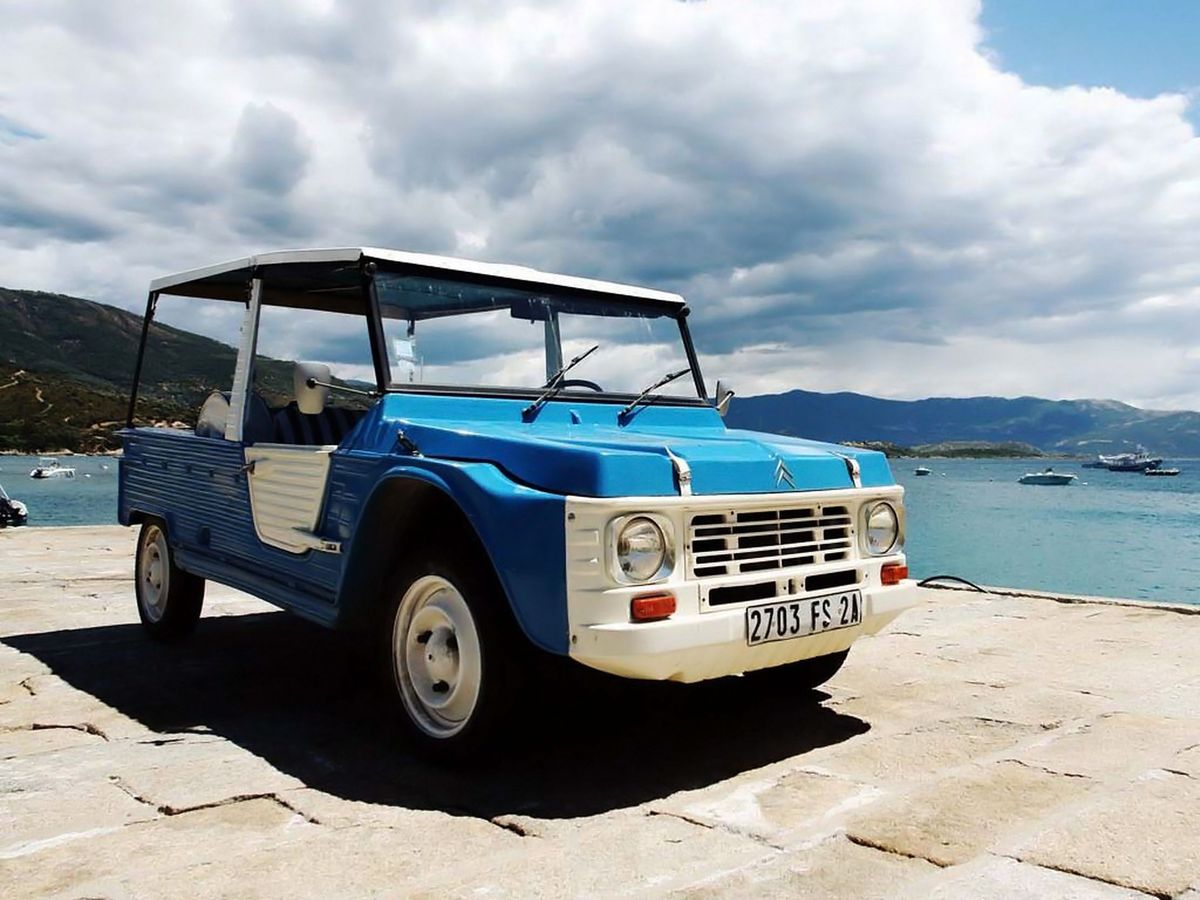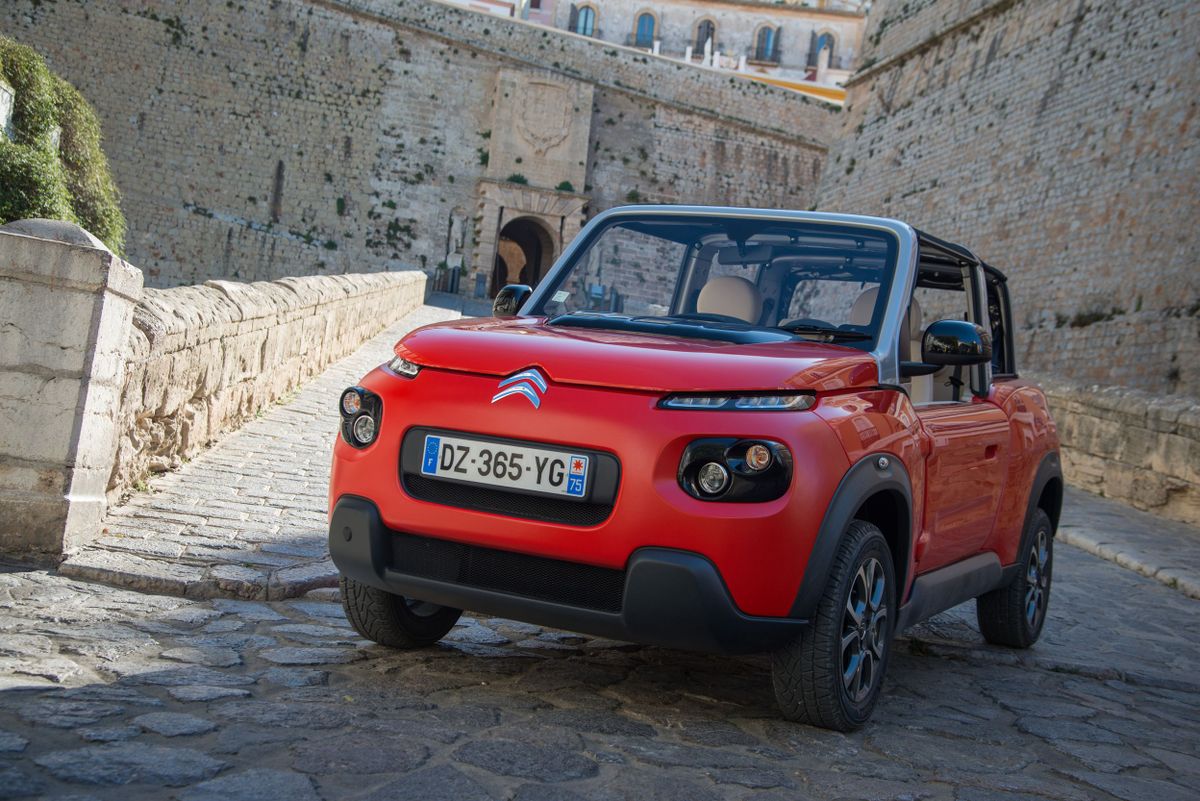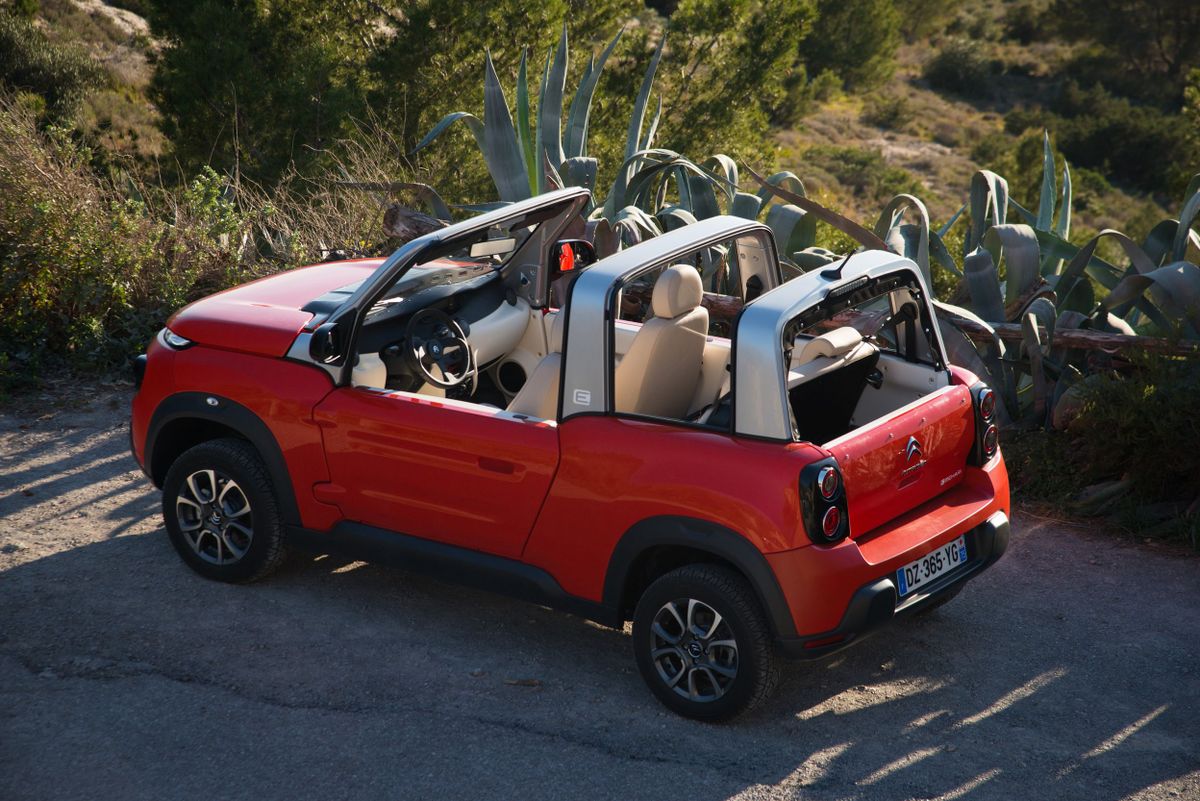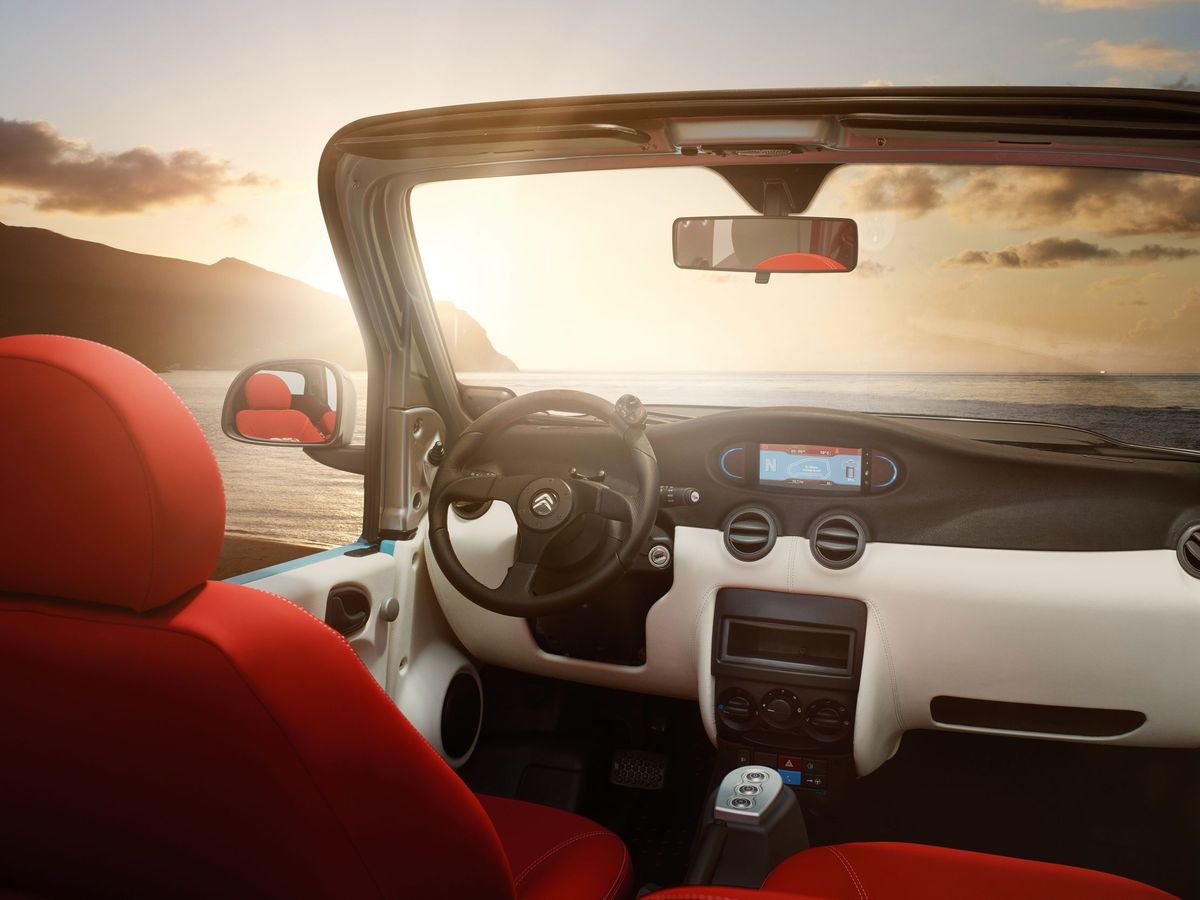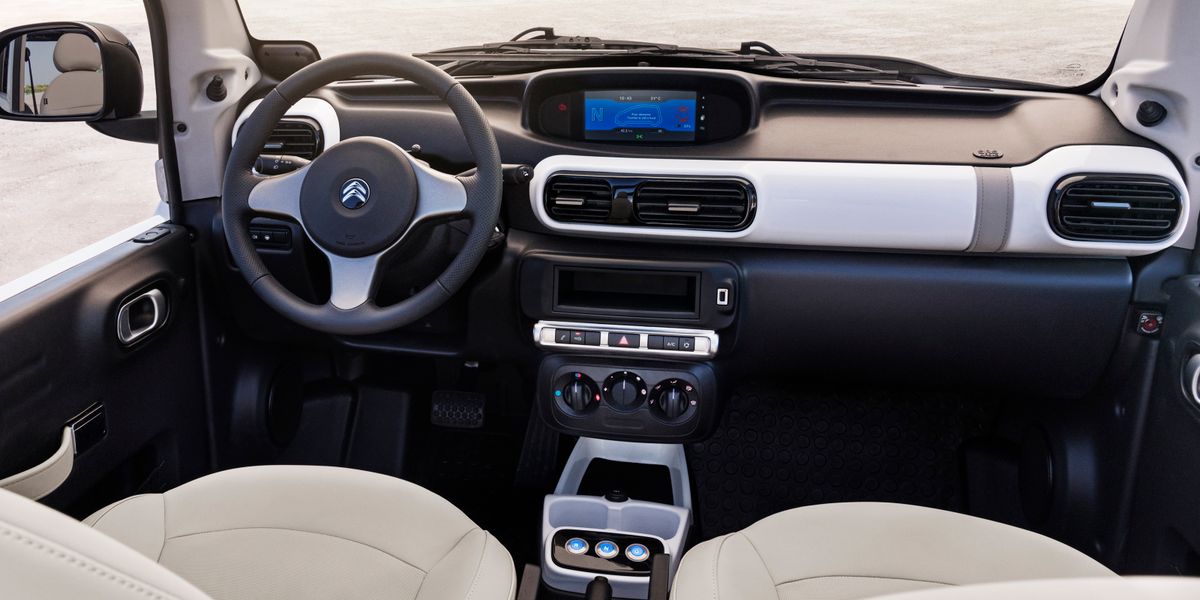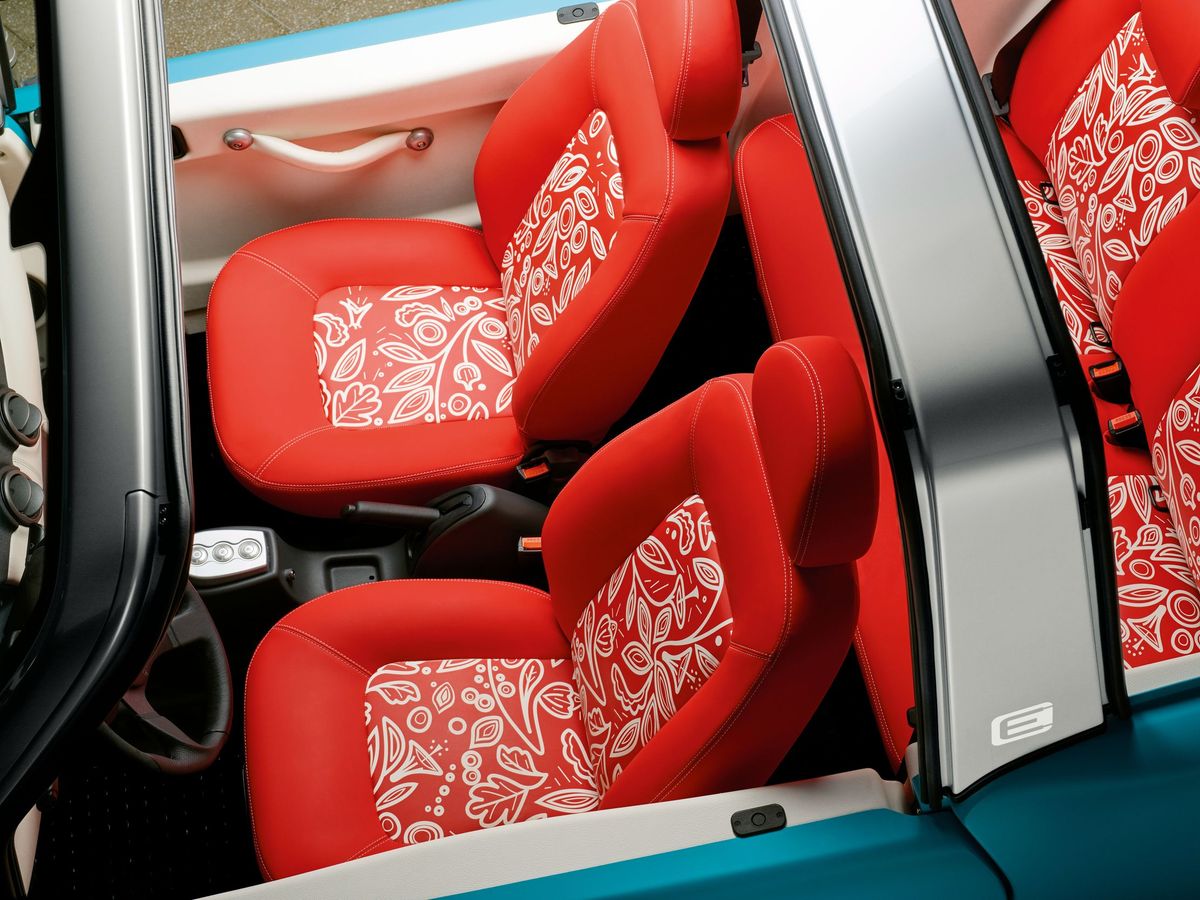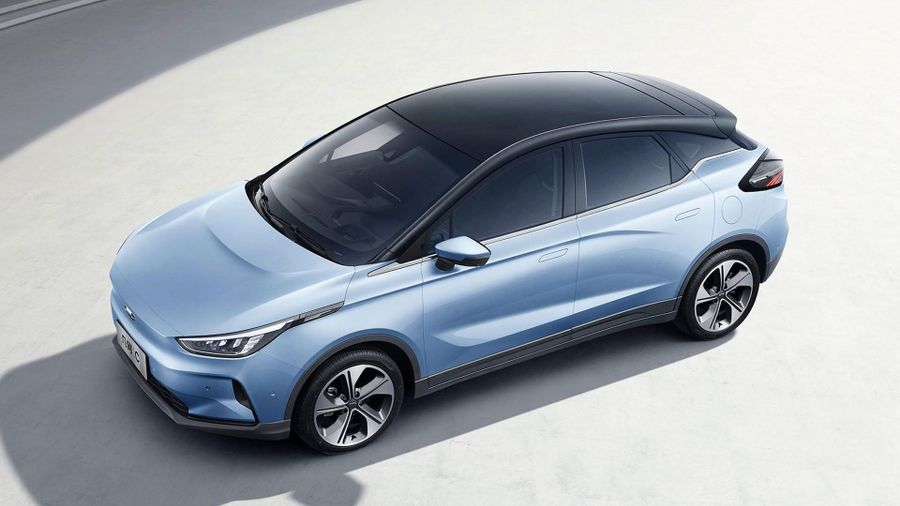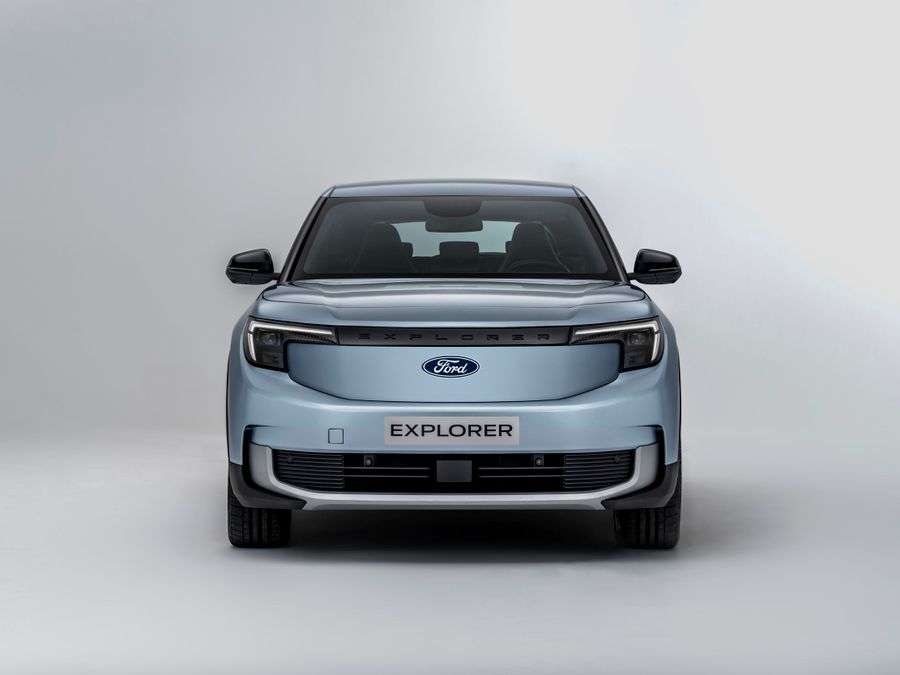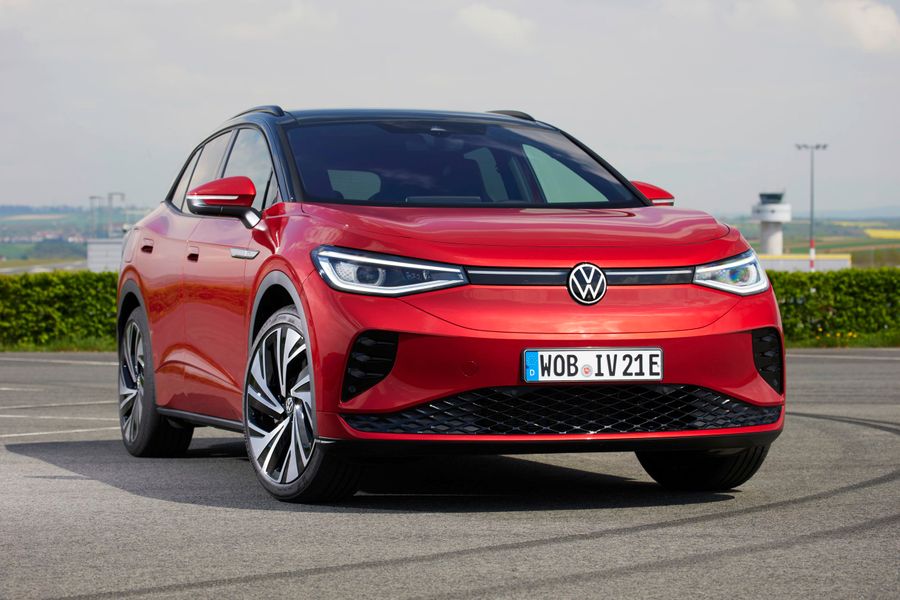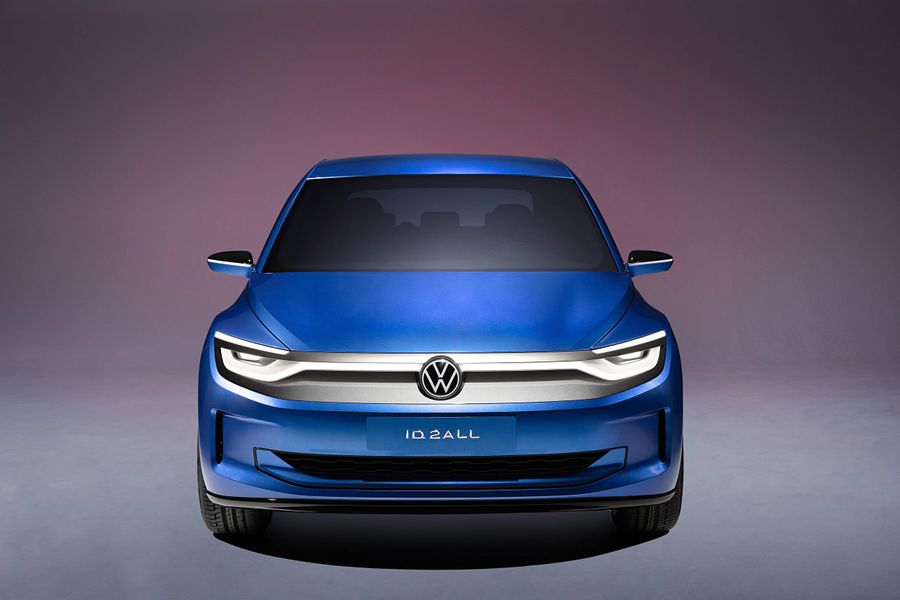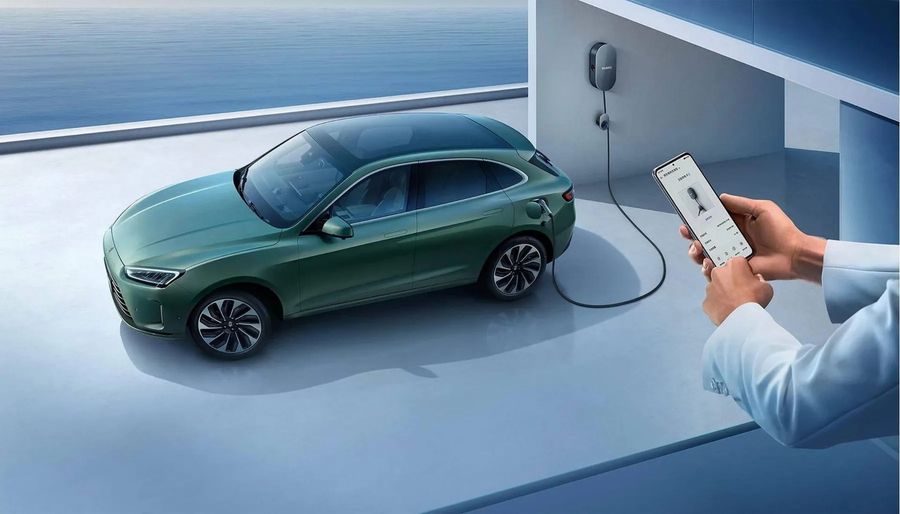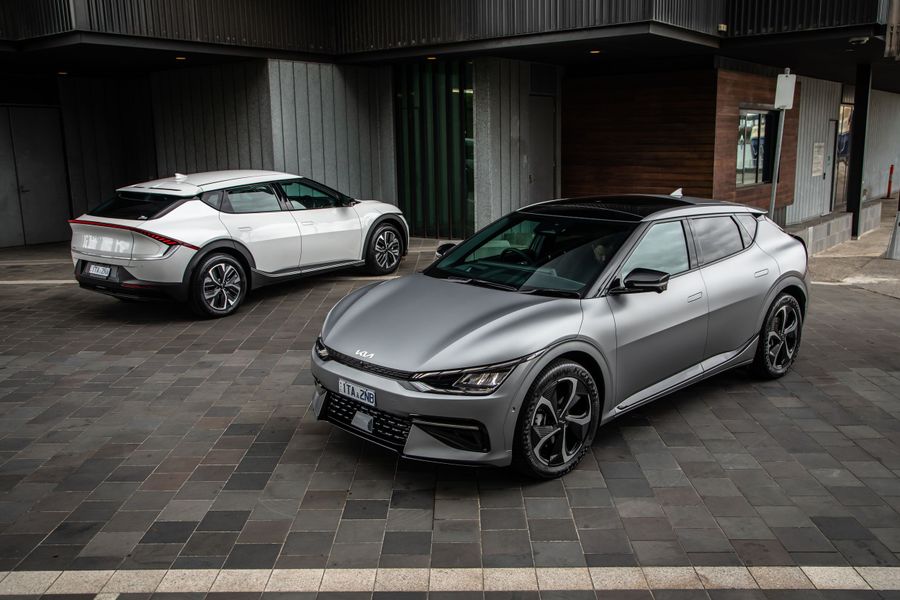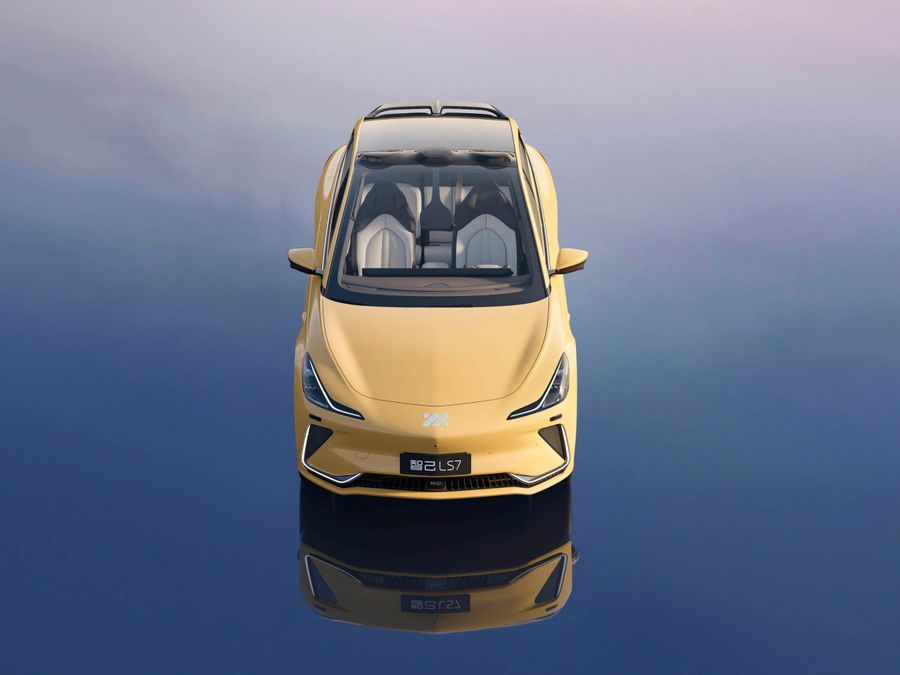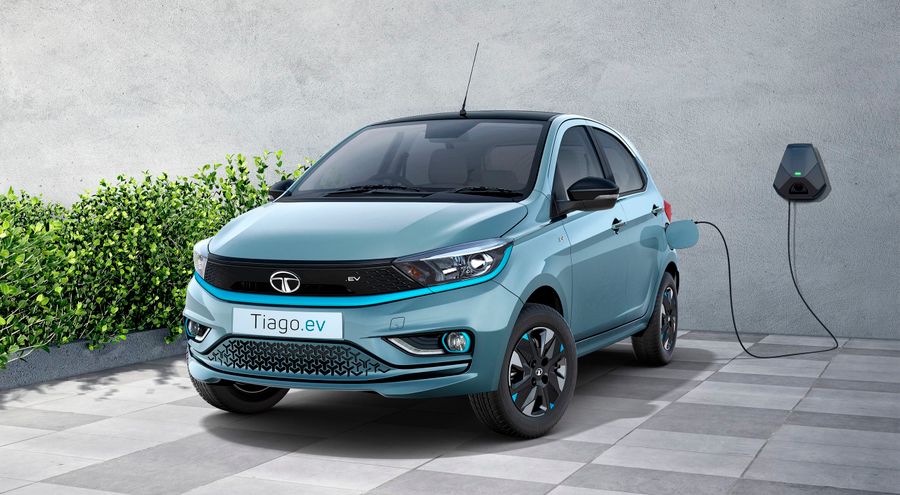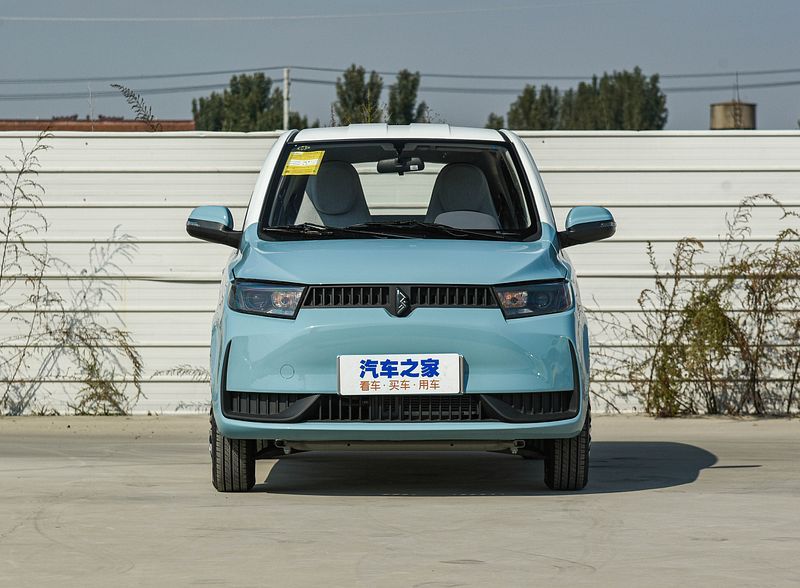
Citroen E-Mehari. Retro-futurism in the real world
The Citroen E-Mehari is an off-road subcompact buggy, produced in small batches since 2016. It is an electric reincarnation of Citroën’s two-seater open-top car for out-of-town use, which was produced from 1968 to 1987. “Mehari” is a kind of dromedary known for its speed. Mehari is more than an ordinary camel, as it is mainly used for riding. This name is supposed to convey the essence of this unusual car.
The E-Mehari is Citroën’s image car that shows the company’s direction after the separation from DS Automobiles, a stylistic prototype for the C3 and C3 Aircross. This peculiar product of retro-futurism, a modern take on an old model, is certainly constructed with a slight French sense of humor. Moreover, according to reviews, it is an almost ideal rental car for a fun vacation in southern countries.
Origins
The old Mehari is based on the Citroën 2 CV, which could allow you to cross a plowed field with a basket of eggs on the seat without breaking them. The car had many interesting design features, which were then used on the Baby-Brousse light-weight two-cylinder utility vehicle (operated in Vietnam, Iran, Chile and Greece). The vehicle was distinguished by its fundamental simplicity and low cost production.
Roland de la Poype, a French nobleman, pilot and World War II hero, used the best practices applied in the creation of the Baby-Brousse to equip the Citroën Dyane with the ABS resin body (high-impact technical thermoplastic resin based on acrylonitrile copolymer with butadiene and styrene), Citroën 602 cm³ engine and a soft rooftop. So the first Citroen Mehari was born. It was a compact off-road vehicle for recreation, short distance rides and family trips to nature. By folding the rear seat, it could be turned into a two-seater for everyday use.
Despite the fact that due to the world famous 1968 protests, the Mehari’s introduction went almost unnoticed, the vehicle successfully worked and entertained drivers and passengers, as well as military and gendarmes until 1987. In total, from 1968 to 1988, 144,953 of these all-terrain vehicles were produced. Throughout its life, the Mahari changed slightly, acquiring stronger versions and different rooftop options. And so it was decided to revive such a purely utilitarian vehicle in the form of an electric vehicle.
Electric dromedary
The E-Méhari was designed by Pierre Authier, creator of the Peugeot 208 and 2008, and Automotive News Europe’s Best Designer of the Year 2014. The old petrol Mehari was used as a concept, as a basis for design decisions and as an example of the capabilities of Citroen engineers. But its technologies were borrowed from more modern Bolloré Bluecar, a small city electric car developed by battery manufacturer Batscap. This e-car is often offered in different countries within a car sharing network.
The new Citroen E-Mehari is a buggy that would look good at the beach races. However, if we want to be really picky, we can say that this is a 2-door convertible mini-SUV. The front end design is reminiscent of the Citroen C4 Cactus. The top is completely open, but if necessary, the tarpaulin roof can be pulled over the arches. The vehicle is 3,809 mm long, 1,728 mm wide and 1,653 mm high, with a wheelbase of 2,430 mm and curb weight of 1,405 kg.
The Citroen E-Mehari was built with due account to the company’s historical heritage, but is still directed towards the future. The concept of the car is reminiscent of the iconic Citroën Méhari, introduced in 1968. Today it is a 4-seater, 100% electric convertible designed in a modern, cheerful style.
As for the power units, the electric vehicle is equipped with a 50 kW (68 hp) engine, accompanied by a 1-speed fixed gear. The engine is powered by a 30 kWh lithium-polymer battery, which provides a range of up to 200 km in the city and 100 km outside the city. The battery can be charged in 13 hours from an outlet or in 8 hours from a special device.
According to reviews, an electric vehicle will allow you to have a relaxing holiday on the coast. Despite the fact that the new Citroen E-Mehari has good off-road parameters, it is still more optimal for flat terrain, such as a beach. When trying to test the ‘dromedary’ on real off-road, you can feel all potholes and irregularities, and the vehicle is practically unsuitable for high speed driving.
The E-Mehari is a true niche product, but interesting in its own way. In 2016 and 2017, the company sold about 900 vehicles in Europe. During this time, the E-Mehari evolved from a beach car to a more practical transformer by acquiring removable rigid roof sections, a full set of real side windows and an opening rear window (this Hard Top version complemented the previous Soft Top version). Taking into account an environmental bonus of 6,000 euros, the upgraded Citroen E-Mehari can be bought in France at a price of 19,500 euros (Soft Top) or 20,700 (Hard Top). The electric vehicle is produced at the PSA group plant in Rennes, thanks to which it has the Origine France Guaranteed certificate. Despite the fact that the E-Mehari was formally terminated in 2019, it continues to be produced in small batches. And it may very well be that we will see the second generation.

